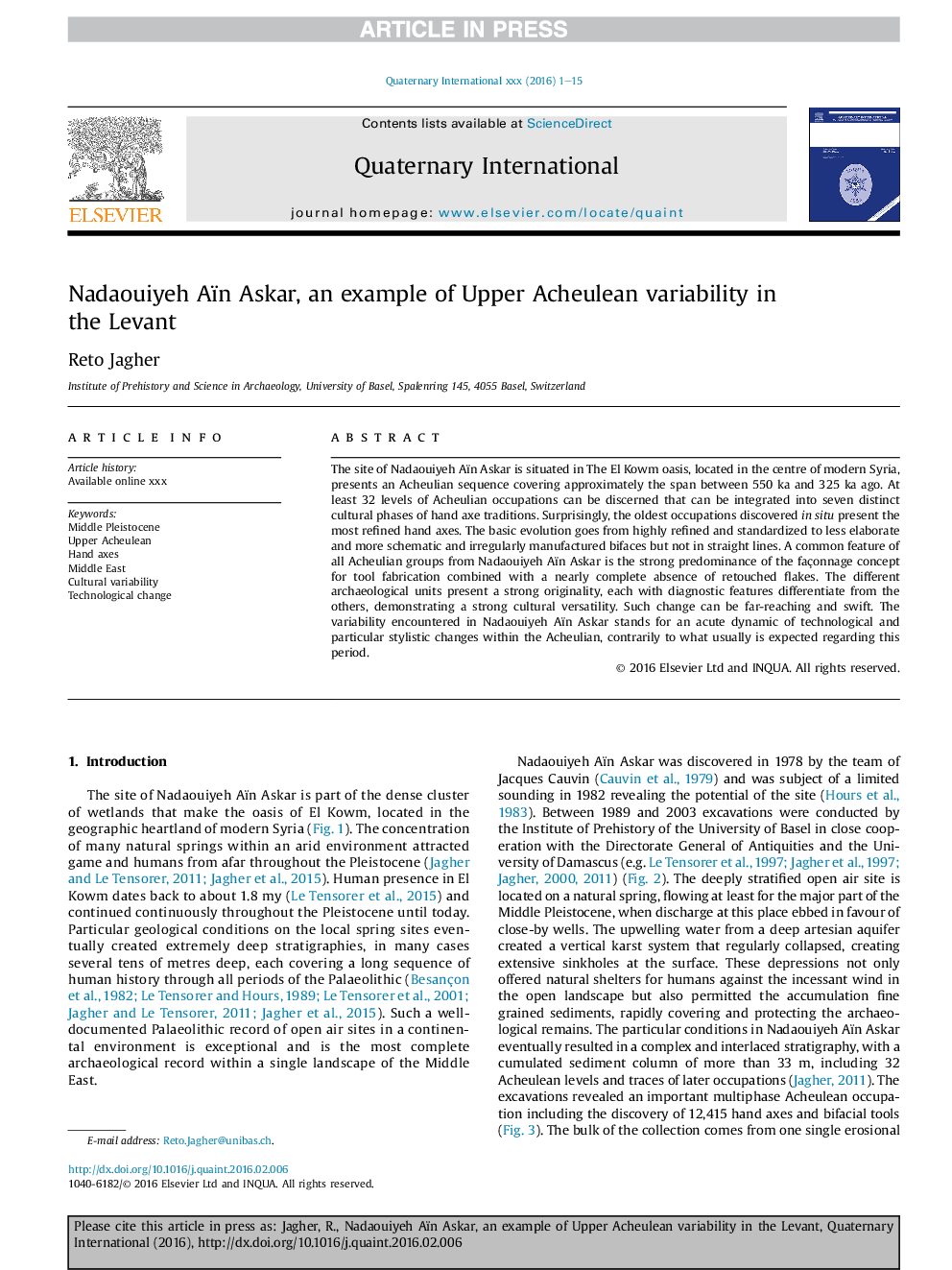| Article ID | Journal | Published Year | Pages | File Type |
|---|---|---|---|---|
| 5113837 | Quaternary International | 2016 | 15 Pages |
Abstract
The site of Nadaouiyeh Aïn Askar is situated in The El Kowm oasis, located in the centre of modern Syria, presents an Acheulian sequence covering approximately the span between 550Â ka and 325Â ka ago. At least 32 levels of Acheulian occupations can be discerned that can be integrated into seven distinct cultural phases of hand axe traditions. Surprisingly, the oldest occupations discovered in situ present the most refined hand axes. The basic evolution goes from highly refined and standardized to less elaborate and more schematic and irregularly manufactured bifaces but not in straight lines. A common feature of all Acheulian groups from Nadaouiyeh Aïn Askar is the strong predominance of the façonnage concept for tool fabrication combined with a nearly complete absence of retouched flakes. The different archaeological units present a strong originality, each with diagnostic features differentiate from the others, demonstrating a strong cultural versatility. Such change can be far-reaching and swift. The variability encountered in Nadaouiyeh Aïn Askar stands for an acute dynamic of technological and particular stylistic changes within the Acheulian, contrarily to what usually is expected regarding this period.
Related Topics
Physical Sciences and Engineering
Earth and Planetary Sciences
Geology
Authors
Reto Jagher,
